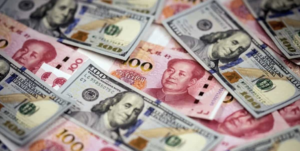Throughout their history, the United States have built their identity as a great power around the figure of their external enemies. In a similar way to every social phenomenon, a referent, i.e. an opposing image, is needed in order to understand and assert one’s identity.
This is more relevant considering the great influence of the US in the international system; mainly because most of the institutions that regulate the world system follow guidelines that are based on values promoted by Washington. Therefore, the US’ main goal has been to maintain the current international order. Furthermore, any idea or belief against this order can be understood as a threat to US hegemony.
Considering these arguments, it is possible to go back in time and remember the classic enemies and rivals of the US. For instance, totalitarian regimes like Mussolini’s Italy, Nazi Germany and imperial Japan during the Second World War, as well as the USSR during the Cold War. Starting in 2001, the War on Terror is also worth mentioning. Nowadays, there are many reasons to consider the creation of a new rival: the People´s Republic of China.
The rise of a new great power
The rhetoric of a “Chinese threat” is directly related to the extraordinary economic growth of the Asian country. This was possible thanks to China’s opening to the world in the late 1970s, a starting point from which the structural reforms to the economy allowed for an export-based model and increased foreign direct investment, although, unlike in the US, the participation of the State remained strong. At the same time, China established economic relations with many countries on the globe through trade agreements, investment and financing.
As a result of these reforms, China’s GDP has increased significantly in the last 40 years, which is why it is now the second largest economy in the world. Many experts have predicted that, based on these numbers, China will soon surpass the US to become the world’s largest economy.
The success of the Chinese model has stirred things up in Washington; and, although the Asian country is mostly focused on prioritizing economic relations rather than political goals, there have been some actions that have led the US to believe that China wants to have a more relevant role in global governance. This means, from a US perspective, that China could try and change the rules by which almost every world institution, from the IMF to the World Bank, have been playing by ever since the post-war period.
In contrast, from a Chinese perspective, changing the status quo is not part of its plans; instead, its main goal is to improve China’s position in the current international system, aspirations that have been put to a halt by the US on the condition that the Chinese economic system be reformed.
First Round: Trade War
US skepticism with regard to China’s intentions is mostly directed at its economic system. The arguments put forward by President Donald Trump and his government are that China has widely benefitted from the liberal system and its institutions, but it has failed to adopt a “truly” free market model capable of guaranteeing a fair competition among enterprises. Stronger accusations have also alluded to currency manipulation, rules that facilitate transfer of American technology to China with no reciprocity and unfair restrictions on inwards FDI.
Based on these accusations, Trump declared a trade war, through tariff policy, on Chinese imports, although he failed to reach a consensus regarding the implementation of such measures.
After an escalation of tensions between both powers, a partial solution to the dispute, in the form of a pre-agreement, was settled in January. Nevertheless, Trump’s negative rhetoric against China has not stopped.
Second Round: the Covid-19 crisis
Two months after the aforementioned events, the Covid-19 pandemic has provided another opportunity to refuel the anti-China rhetoric.
Paradoxically, this time it was China who took the chance to accuse the United States of causing the still-ongoing health crisis. According to a Chinese spokesman of the Ministry of Foreign Affairs, “the US Army has brought the coronavirus to Wuhan”.
For their part, the US have not only dismissed this accusation, but also pointed out China as the main culprit for the propagation of the virus. Trump has referred to the virus as “the Chinese virus”.
There is no doubt that, amidst a global crisis, both countries are still trying to hurt each other’s reputation, and have resorted to argumentations that are in direct opposition to the scientific consensus on the origin of the virus, which rather points to a spontaneous development of events.
What next ?
For a long time, many analysts and scholars have been predicting the inevitability of a dispute between China and the US. Their main argument is that China is not particularly interested in promoting the liberal order, but is instead developing a long-term strategy to change the rules in the future.
The most noteworthy example is that Chinese officials have given hints of wanting to reform the guidelines of the IMF and the World Bank, which are the core institutions of global economic governance. However, what is more certain is that China does not have the capacity or resources to confront the US for global dominance. Being aware of this, China has focused on promoting itself as a country that wants to do business without interfering in other country’s domestic affairs.
Finally, the promise of a multipolar world seems to be vanishing considering the latest events. After all, the only match for the US is China, and vice versa. Rising tensions will most likely lead to a bipolarity that has not been seen since the end of the Cold War.
Picture credits: The Business Standard






Be First to Comment